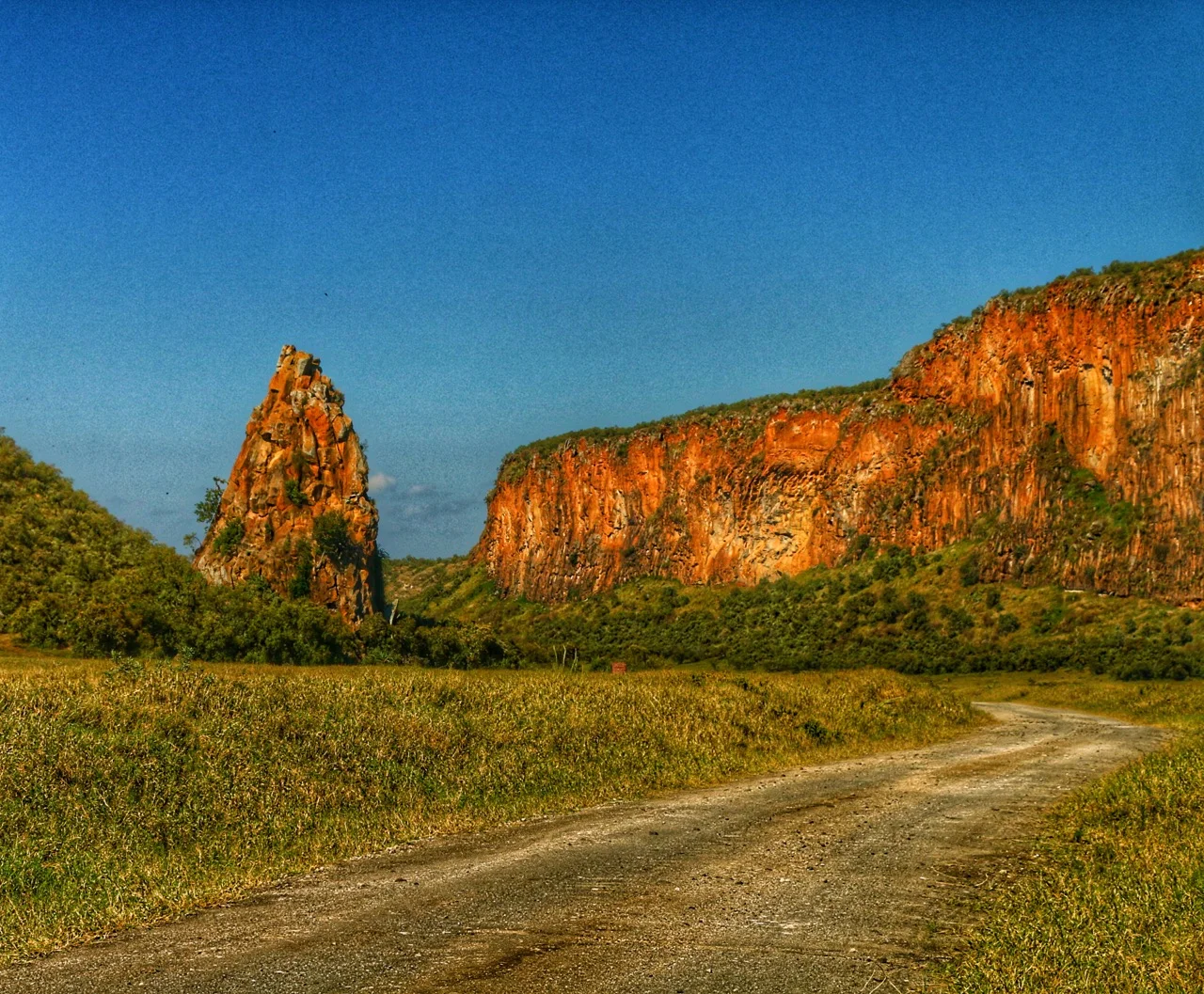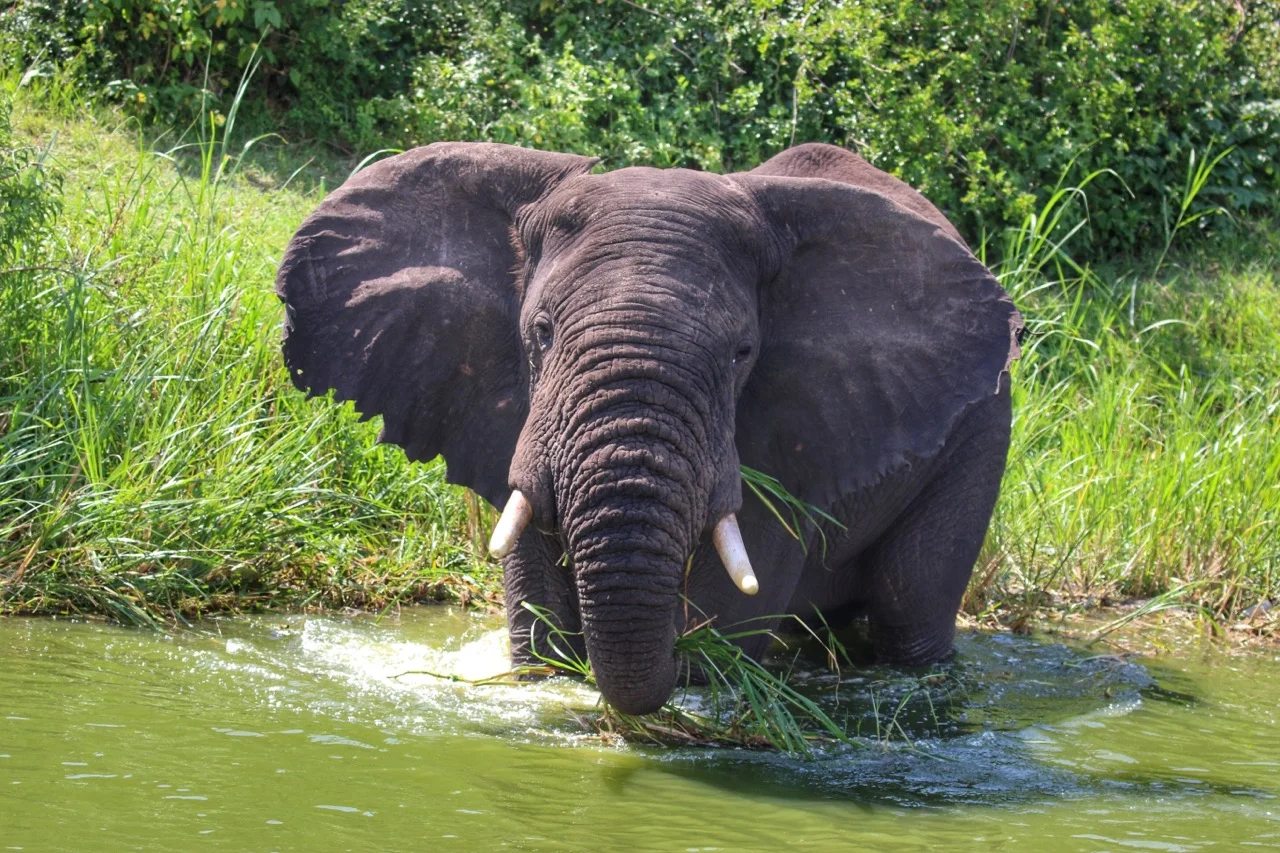Nakuru National Park used to be known for flamingos. Not so long ago, it was practically covered with the pink birds that flocked to its waters. But due to some sort of geological change (perhaps a shift of the tectonic plates), it expanded and the salinity changed, altering the availability of the flamingo’s favorite food,blue-green algae. There are still flamingos, but not in the numbers there used to be. Now, the stars of the show are the rhinos.
A few of the remaining flamingoes - formerly there were hundreds of thousands
Boasting a high concentration of both black and white rhinos, these homely and charismatic beasts are quite a draw.
We were the first group into the park and apparently the early bird gets the rhino as well as the worm. Our first sighting was a black rhino roaming the open grasslands. Normally they are solitaryforest dwellers, their triangular beak-like mouth being well-adapted to feeding on twigs and leaves. But this one was happily ambling about, marking territory with abandon, and in the process giving us a brilliant look at one of the most endangered animals in the world.
Black rhino: note the triangular, beak-like mouth
We spent the rest of the morning driving halfway around the lake. Sightings included zebras, waterbucks, giraffes and one creature on my personal “must see” list, the lilac-breasted roller. Kenya’s national bird, their beautiful plumage in electric greens and blues as well as lilac makes them a decorative addition to the countryside.
We also found one of the park’s more unusual residents - a tree-climbing lion. We startled it as we drove by and it climbed up into the tree it had been resting beneath. I had heard of this tendency, but have to say that I imagined it being lions draped like garlands over the sparse branches of an acacia, not in a shroud of leafy bushes, but it was undoubtedly a lion in a tree.
A lion in a tree - I was so flabbergasted I neglected to take a photo of the actual tree. You’re going to have to take my word for it. This lion was aloft.
By mid afternoon we headed down to the southern edge of the lake, where white rhinos are known to feed. Their wide flat mouths are adapted to eating grasses and we saw 9 of them grazing there. My particular favorite was a mother-and-baby pair.
White rhino: note the wide, flat mouth
If you go: A full-day game drive circumnavigating the lake is an excellent use of your time, especially if you hope to see both black and white rhinos. Take a break in the middle of the day (when animals are least active anyway) and use the pool at Nakuru Lodge - a bargain at $3 that will leave you refreshed for more afternoon animal-spotting.














